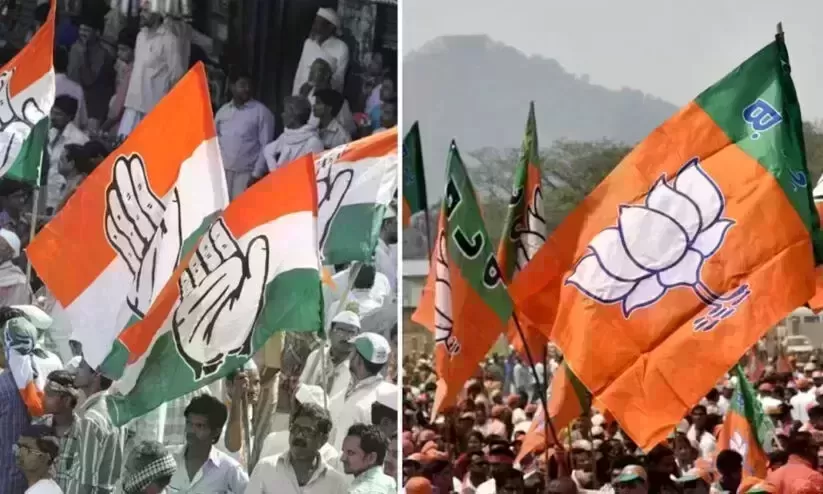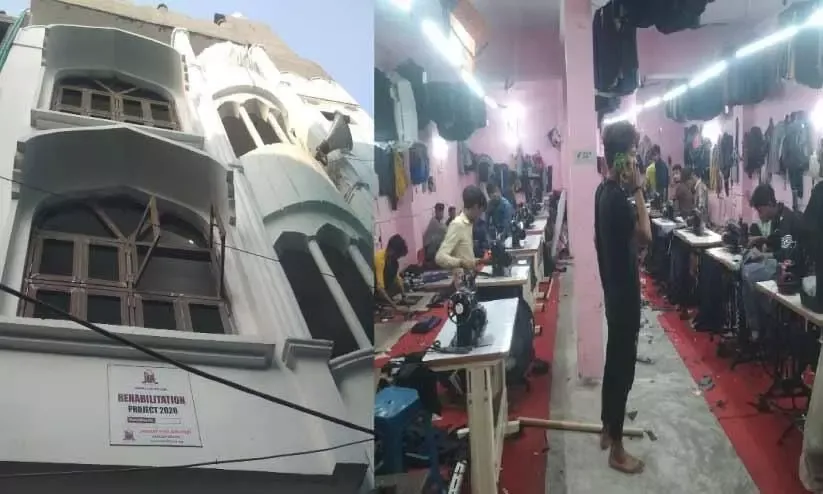
A year after Delhi riots: After sending 25 rioters to jail, Nasir under police security
text_fieldsThe mosque restored by Jamaat-e-Islami Delhi chapter (Left); Textile production unit started by Human Welfare Foundation (Right)
In Khajoori Khas, there are several riot victims who rebuilt their lives and livelihood from scratch with the help of voluntary organisations, who then withdrew the cases they filed, giving in to pressure from the Sangh Parivar.
Many organisations, including Jamiat Ulema-e-Hind Mahmood Madani group, PM Inamdar of Maharashtra, Jamat-e-Islami Hind Delhi chapter and Vision 2026 of Human Welfare Foundation, together put an effort to rebuild houses, industrial units, mosques etc. totalling nearly 50 buildings as part of rehabilitation. Several in Khajoori Khas who received aids from these organisations later turned prosecution witnesses to save the Sangh Parivar rioters. Several still engaged in legal battles, showed videos of local Muslim leaders joining the Sangh to convince them to withdraw cases against the rioters. Victims of Bhagirathi Vihar, on the other hand, are firmly going ahead with their legal battles.
Nasir Ahmed is a wholesale cloth merchant. After sending 25 neighbours, who turned rioters, to jail, he is now under police protection ordered by the Court after he received death threats. A resident of Bhagirathi Vihar, he lost his business and property during the riot.
On February 25th, Nasir Ahmed ran for his life from the 16th Gali of Bhagirathi Vihar after an armed group rushed in. Nasir recollects calling the police multiple times the day before when he witnessed the rioters destroying CCTV cameras installed by the Delhi government. Though there are 60 Muslim households in the region, they are still isolated amongst the majority. Though the police said they would send forces, that did not happen. It was at this junction, where roads to Ganga Vihar, Johripur, Gokulpuri and Chaman Park diverged that most killings took place during the Delhi communal riots. Those who ran from these four roads were captured, robbed, killed and dumped in the large drains of Brij Puri.
The rioters, in addition to killing, looted and burnt homes. After robbing Nasir's cloth godown, they set the front of his three-tier building on fire. They found shelter in neighbouring Hindu houses through the terrace. Everyone in the armed crowd was from the neighbourhood.
When he registered an FIR at Gokulpuri police naming the attackers, he received threats to his life. But he kept his foot firm on his decision to bring them before the law for the sheer cruelty of his very acquaintances.
When the death threats increased, he approached the Court with the help of Advocate Mehmood Pracha. The Court appointed two police officers for his security. When asked whether he trusts the police who didn't step in while the riots occurred, Nasir Ahmed retorted that he trusts the Court.
























